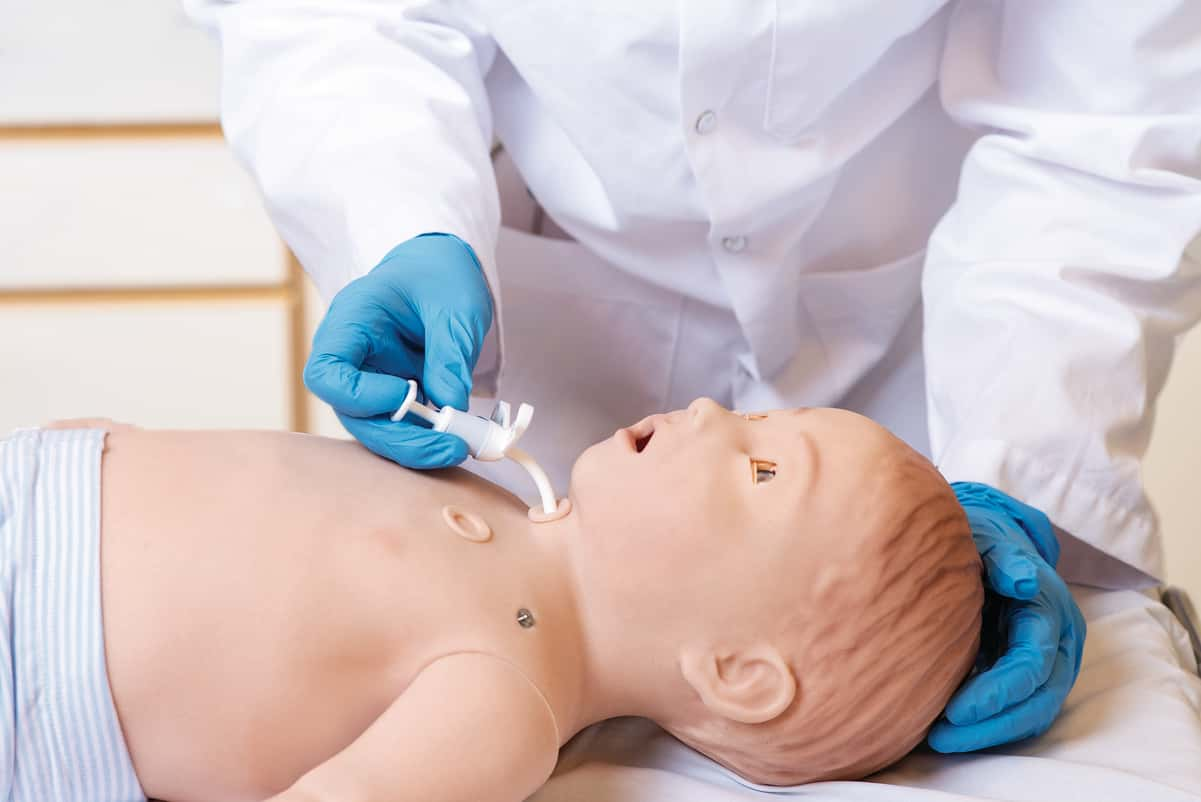SimBaby Features
4:41
SimBaby is a tetherless simulator designed to help healthcare providers effectively recognize and respond to critically ill pediatric patients. The SimBaby simulator represents a 9-month-old pediatric patient and provides a highly realistic manikin that meets specific learning objectives focusing on initial assessment and treatment.
We improved SimBaby so healthcare providers can practice in a safe and realistic team-centered environment preparing them to make critical decisions. Whether it be emergency, intensive care, or point-of-care training such as home care, learning to communicate effectively and respond as a team with established confidence and competence can help improve patient outcomes.

Children can have different physiological responses to trauma compared to adults. Learning how to effectively recognize and respond to respiratory emergencies, shock, and cardiopulmonary arrest can improve the healthcare provider's ability to respond more confidently in an emergency situation.
Assess capillary refill time
Test pupillary light reflex
Check bilateral pulses
For effective monitoring and improvement of CPR performance, QCPR Technology has been incorporated into SimBaby.
Key metrics measured include:
Realistic anatomy ensures a learner performs correct head tilt, chin lift and experiences appropriate chest resistance and chest rise.
Scenarios based on the American Heart Association's Pediatric Advanced Life Support curriculum help learners prepare for those critical situations mirroring real-life critical events before ever having to respond to an actual emergency.
Laerdal also offers help to develop scenarios tailored to your specific needs. Together with your clinical subject matter experts, our educational experts can develop scenarios that support standardized delivery for improved learning outcomes and clinical impact. We will also support you in implementing these scenarios in your institution.

With its intuitive touchscreen interface, mobile design, easy-to-operate scenarios and integrated data log, SimPad PLUS will help you achieve learning objectives with greater ease.
LLEAP software unifies the control of all PC operated Laerdal simulators and helps you to conduct simulation training and develop new scenarios to meet your learning objectives with greater ease.
Capture, share and debrief training sessions using synchronised audio, video, and simulation information from one of Laerdal’s debriefing options.
Make the most of your SimBaby with our range of integrated upgrade options to enhance your simulation.

SimBaby with Tracheostomy
Improve competence and confidence by realistically simulating tracheostomy care.

ASL 5000 Lung Solution
Conduct training with a spontaneously breathing patient supported on a ventilator.

SimCapture
Learning management solution with integrated debriefing and assessment tools.

VitalsBridge
Use your own clinical patient monitor during simulation training for increased realism.

ShockLink
Incorporate defibrillation and AED into your training.
Use SimBaby to practice critical patient assessment and handover situations of a 9-month-old simulated patient in a safe and highly realistic training environment.